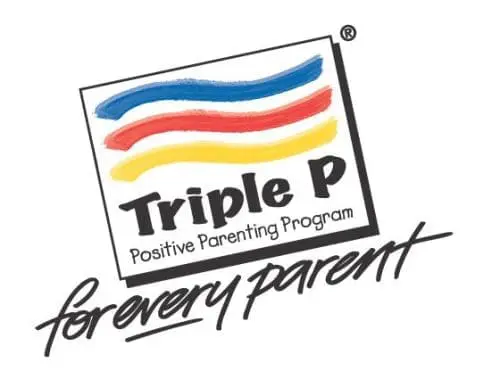A Parents Guide to Understanding the Harms of the Phone-Based Childhood, Along With Ten Tips for Rolling It Back
Introducing Catherine Price, who writes books on fun and on phones, and offers ten tips for helping you and your children scroll less and live more – Jon Haidt
I first discovered Catherine Price because a friend told me that I needed to have more fun. He recommended that I watch a TED talk titled Why having fun is the secret to a healthier life. It is extraordinary, and it fits so well with the themes of The Anxious Generation and Let Grow. True fun happens, says Catherine, when we have three things at once: playfulness, connection, and flow. (Please join 5 million other people and watch the talk.)
A few months later, I happened to attend the TED conference where Catherine was offering a workshop on how to have more fun. I signed up for it and loved it so much that I altered the Flourishing course that I teach at NYU-Stern to devote a whole week to play and beauty, in which we use some of Catherine’s workshop materials.
Two of Catherine’s books happen to be about the two halves of the story in The Anxious Generation: one is on the problem of phone-based life, the other on the joys of a fun-based life: How to Break Up With Your Phone and The Power of Fun
She writes a Substack titled How to Feel Alive. Catherine is one of the few public intellectuals who really gets both halves of the story: kids—and all of us—need more fun, less phone. So I already had my eye on Catherine as somebody I wanted to work with, someone to draw in to the movement to Free the Anxious Generation.
And then, last month, she gave one of the best talks I’ve seen on the problem of the phone-based childhood. It is powerful, brilliant, and clear. It’s a talk that every parent should watch. I have posted a few videos of talks I gave to education audiences, but Catherine’s talk is better than mine as a talk for parents. This is the video you should share with the parents of your kids’ friends, to get you all on the same page: motivated, informed, ready to engage in collective action to roll back the phone-based childhood and replace it with a joyous, fun, play-based childhood.
Zach and I are so impressed with Catherine that we decided to invite her to join our core team, at Free the Anxious Generation. This means she’ll be writing more here, on the After Babel Substack, and she’ll be giving more lectures to schools and to parent groups. (She’s based in Philadelphia.) She’s so creative that we’re just taking her on, and we know that we’ll find a dozen other ways that she’ll help us advance our mission to reclaim childhood in the real world.
And now, here’s Catherine.
— Jon
As a health and science journalist and the author of How to Break Up With Your Phone, I’ve spent years developing evidence-backed suggestions for how adults and teens can manage their relationships with their devices. Now that my daughter is about to become a fourth grader, I’ve realized that I need to do the same for kids.
I started by putting together a presentation about kids, smartphones, and social media for parents at my daughter’s school (K-8). In it, I offered resources, ideas, and solutions to help families navigate these issues.
You can watch my talk here:
Kids, Smartphones and Social Media: The Risks and The Solutions
Link to talk: https://www.youtube.com/watch?v=Ro-XgHp7OPA
As you can see from the slide behind me, I felt the need to provide an emotional roadmap to the audience. We started in a state of vague discomfort and feelings of powerlessness. Then I escorted everyone into a deep pit of existential despair, as I talked about some of the risks and threats our children face online. (Warning: this part is graphic and upsetting.)
But — I promise this is true! — we ended on a note of optimism and empowerment, with concrete suggestions and a proposed plan, including an invitation for families to take collective action (more details below).
Note: If you’d prefer to listen to the talk podcast-style, you can doso via the How to Feel Alive podcast page, which provides links to a recording of the talk via popular podcast platforms.
After I did the presentation, I decided to write down its main suggestions and takeaways in hopes that they might reach—and help—more people. The following is the first half of what I’m aspirationally referring to as an Ultimate Guide to Kids, Smartphones, Social Media, and Screens. My hope is that it will help families tackle some of the most common challenges and decisions we face.
Please feel free to share this post and any of the resources in it (including the recording of the talk and its slide deck) with anyone who might be interested. We escape from this trap through collective action, so the more people who are aware of these issues (and solutions), the better. If you have suggestions for additional resources or ideas for how to improve this, please share them in the comments.
Base your family decisions about screen time, social media, and smartphones on what you—and we—already know for sure
The subject of kids and screens has become a surprisingly contentious issue. Jon Haidt, Zach Rausch, and Jean Twenge have created a useful open-source document cataloging the studies that have been done so far. This document is for anyone who wants to look into the research showing that social media and phone-based childhood are not just correlates of bad mental health; they are causes.
But I don’t think we, as parents and caregivers, need to worry about the details of individual studies in order to take action. Instead, I believe that as academics and policymakers continue their research and debates, parents and caregivers should make decisions based on what we already know for sure—including:
- Our own values and how the effects of smartphones and social media often do not align with them. For example, I’m going to bet that you want your children to believe in, express, and experience kindness, empathy, tolerance, honesty, compassion, and self-confidence, among other values. And I’m going to bet that if you stopped to think about it, you’d agree that these are not the values that most of our interactions on our phones and social media support.
- Factors essential for our children’s mental and physical health (e.g., adequate sleep, strong relationships, physical activity, free play, time outdoors) and how smartphones and social media interfere with them.
- The amount of time children are spending on screens and the ensuing opportunity cost of what they are therefore not doing—such as developing hobbies and interests, reading books, and spending time with friends. (Teens report spending more than seven hours a day on screen-based leisure activities, not including school work or homework. This adds up to more than two full days per week—nearly a third of their lives, or almost 44 percent of their waking hours.)
- Early adolescent brain development: The prefrontal cortex (the part of our brains responsible for decision-making and executive control) is not fully mature till our 20s, but the earliest years of puberty, starting around age 10, are a particularly sensitive period in which children’s brains begin to prune extraneous neural connections and strengthen the ones that are used the most frequently. This means that early adolescence is a time when it is particularly important to pay attention to your child’s everyday habits and experiences, and it’s a really bad time to hook them up to TikTok, Instagram, or any other social media platform that will drown them in algorithmically selected content. (For more information on this, check out Chapter 4 of The Anxious Generation)
- What the companies themselves know about the effects of their own products and platforms. (Spoiler alert: many tech CEOs are so concerned that they restrict their own children’s use of social media and video games and send their kids to schools that do not let them have phones, iPads, or Chromebooks.)
- The risks and threats that exist online — e.g. sexual predators, pedophiles, financial and sexual extortion schemes (often run through social media or multi-player video games), bullying, pornographic and addictive content, AI-generated deep fakes, and access to illegal drugs, to name just a few.
The fact that we are in the midst of a youth mental health crisis (and that social media is likely a major contributor).
10 Tips For How To Handle Devices and Screens
Based on my research, experience, and feedback from readers, here are ten guidelines that can help you and your family create healthier boundaries with technology and reduce conflict around screens. They apply to any kind of internet-enabled device or screen (including televisions, tablets, eReaders, laptop and desktop computers, and smartphones), and they can be useful for people of all ages.
Tip 1. Have conversations as a family and educate your kids (and yourself) about the potential negative effects of smartphones, social media, and screen time.
I cannot stress this enough. Too often, I see parents try to impose limits on their children’s screen time without first educating their children on why this is important, getting input from their kids, or reflecting on their own screen habits. (Before we try to dictate their behaviors, we need to acknowledge and address our own!) Some resources and ideas to get you started:
- My book, How to Break Up With Your Phone (and its accompanying interactive text-message-based course, yes, potential irony noted), explains how and why our phones and their apps are designed to be so irresistible and what our screen time is doing to us—and provides a step-by-step plan for how to take back control. It’s meant to be accessible for anyone from around 12 on up (and you can do the course as a family)
- AnxiousGeneration.com (the website for Jonathan Haidt’s book, The Anxious Generation) has a collection of resources for families and educators
- ScreenStrong has useful resources as well, including an excellent textbook that teaches kids about brain development and how our brains are affected by screens
- Dino Ambrosi, founder of Project Reboot, gave a powerful and engaging TedX talk about the opportunity costs of screen time that I recommend watching with your kids
- Also, check out this YouTube clip of two of the earliest executives at Facebook (now Meta) talking about the platforms that they themselves helped create
- Ask your children how they feel when you use your phone and devices when you’re around them and how they might like you to change. (Prepare to be heartbroken.)
Tip 2. Choose (and create) devices that are as basic as possible
- For example, instead of allowing your kids to read on an iPad (which is full of distractions), get a simple eReader, such as the Kindle Paperwhite Kids, which has no internet browser and only allows your kid to do one thing: read books
- If a simple solution doesn’t exist (or if you’re thinking of lending your child your phone or tablet), use a third-party app or product to customize the device. For example, The Brick is a gadget that allows you to block all apps on your phone (and even the internet browser) except for the ones you choose to allow. This is great if, say, you want your kid to only be able to use a phone to listen to podcasts or audiobooks or if you want to take a break from your own phone for a while.
- Also, your child’s first phone doesn’t need to be a smartphone! (And, I’d argue, it should not be.) Instead, choose a basic flip phone or one of the many smartphone alternatives that are on the market, which have limited internet access, a variety of helpful features, and no access to social media.
Tip 3. Only allow devices and screens (including the television) to be used in public places in your house.
- Only allow devices and screens (including the television) to be used in public places in your house. It’s important to be able to see what your children are doing, and getting devices out of your own bedroom will improve your own sleep, too. And also, remember: the bigger the screen, the better. It is highly unlikely that you will find your teenager watching pornography on your living room television set.
Tip 4. Create “No-Phone Zones”
That is, areas of the house in which phones and devices are simply not allowed. Bedrooms and the dining room table should definitely be no-phone zones..
Tip 5. Create a central charging station for devices (not in a bedroom)
Consider doing this for everyone’s devices (grown-ups, too!). You can use something as simple as a basket, drawer, or shoebox.
Tip 6. Give devices a “bedtime”
A “bedtime” that is at least one hour before the humans’ bedtimes (to avoid the stimulating effects of blue light before bed and to help everyone’s brains and bodies wind down for sleep).
If you’re worried about your kids sneaking late-night screen time, be strict about the “no phones in bedroom” rule (for yourself, too!), and consider a family control plan (see below) that allows you to set schedules for internet and app access.
To make this guideline easier to follow, make sure everyone has a standalone alarm clock. If your phone is your alarm clock, not only is it likely to be in your bedroom (within arm’s reach), but you will be guaranteeing that your phone will be the first thing you interact with in the morning since you will have to touch the phone to silence the alarm.
Tip 7. Create schedules for internet access
This is a great way to prevent kids from getting distracted during homework. You can do this by simply designating a charging station for devices that’s not near where homework is happening (and establishing the homework area as a no-phone zone)— or you can use a family control plan (see below) to actually set schedules for when certain websites and apps are (and are not) accessible.
Tip 8. Establish family policies, and communicate them to other families
- For example, let other parents and caregivers know ahead of time that you don’t allow phones on playdates at your house or screens in bedrooms. (The more often we have these conversations, the less awkward they will feel!)
- Extra credit: talk to the parents of your kids’ friends early, as early as elementary school, about agreeing on similar home policies—if you establish community norms now, your kid will be less likely to feel left out later on
- Extra extra credit: talk to the parents of your kids’ friends about encouraging kids to communicate with each other through phone and video calls whenever possible, with texting as a backup (and if/when they text, it should be via the phone’s texting app, not through social media platforms)
Tip 9. Learn about and activate parental controls for every device and app your child uses
This may take you many hours, but if your kid has access to the internet on any device, you need to invest time into understanding and activating the built-in parental controls available, especially for apps and sites that allow contact from strangers, such as social media and multi-player video games (including innocent-seeming ones, like Roblox).
Note: These features can be confusing and complicated to set up, and your child may still find ways around them despite your best efforts. This is yet another reason why the easiest approach is to simply not allow your children to have access to these apps and devices!
iOS:
- How to Set Up Parental Controls With Family Sharing on iPhone (you’ll need to add your child to Family Sharing first)
- How to Use Parental Controls on Your Child’s iPhone or iPad (this article lists all the iOS parental control features in one handy place)
- How to Require Permission Before Your Child Downloads an App (note that if an app was previously installed and then was deleted, your child may be able to reinstall it without your permission)
- Common Ways That Your Child Might Be Getting Around Parental Control & Screen Time Restrictions
Android:
- How to Get Started With Google’s Family Link (If your child has a Google device or account, your first step should be to download the Family Link app, which will allow you to monitor and set limits for their online activities)
- How to Set Up Parental Controls on Google Play (note that Google’s parental controls don’t prevent restricted content as a search result or accessed through a direct link)
- How to Manage Your Child’s Screen Time (including information on how to set daily and weekly screen time limits—both for overall screen time and for particular apps—and schedule “down times”)
- How Do Kids Bypass Google’s Family Link? (Guess what: they can, and they do—sometimes in exceptionally clever ways!)
Other Resources:
- Common Sense Media Guide to Parental Controls (from 2021 but still useful)
- Common Sense Media’s Parent Resource Page
- Common Sense Media “Ultimate Guide to Fortnite”
- Guides to setting up parental controls on popular video streaming sites
- FBI resource page on sexual and financial extortion
- Take It Down — a resource that can help kids and adults try to have compromising images taken off the web.
Tip 10. Consider subscribing to a 3rd party family protection plan
In addition to activating whatever features are natively available, you may want to invest in a 3rd party protection plan if your child has any access to an internet-enabled device (including the television), regardless of whether they have a full-fledged smartphone. These plans allow you to block websites, apps, and/or internet access across devices and even to create access schedules (for example, to reduce distraction during homework or prevent late-night scrolling). They’re often more effective (and harder for kids to get around) than the built-in options on iPhones and Android devices.
Options include:
Do you have other suggestions? Tell us in the comments!
If you’re feeling overwhelmed, I get it: I often do, too. It’s very difficult to create boundaries with devices and apps that are designed to hook us. But take things step by step, and you may be surprised by what a difference these changes can make in terms of your children’s relationships with screens — and your own.
I’ll be back soon with answers to some frequently asked questions. For now, feel free to ask your own questions—and share resources and suggestions—in the comments.
To scrolling less and living more,
Catherine Price
SOURCE: https://www.afterbabel.com/p/parents-guide-to-smartphones






